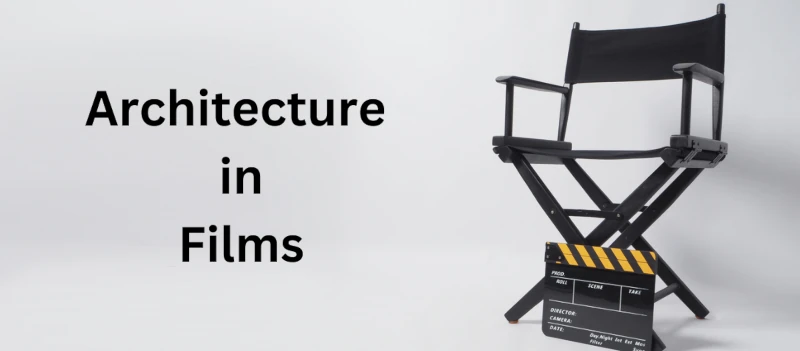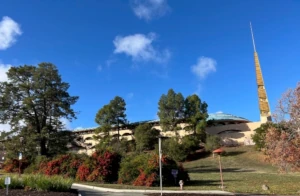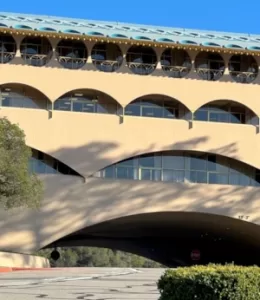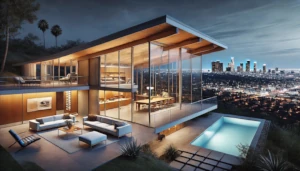Let’s look close to home first, in Marin County.
If you live or work in Marin and travel up and down Highway 101, you’ve undoubtedly seen glimpses of the iconic Marin Civic Center building fondly dubbed, “Big Pink” in San Rafael. The last of Frank Lloyd Wright’s creations is nestled into the hills, and a great example of his desire to honor the landscape. But did you know that long after the architect’s death in 1959, the building itself has starred in more than one movie?
As early as 1971, George Lucas, Walter Murch and Francis Ford Coppola worked on Lucas’s first film, THX 1138, starring Robert Duvall, and they chose the Marin Civic Center to film some of the scenes. For anyone who has ever walked the halls or seen the building from the street below, you can’t deny the uniqueness of the design, with its curves, arches and sky-blue round roof.

Frank Lloyd Wright’s Marin Civic Center looking up from the 3rd floor to the 4th floor and beyond to the skylight in the roof. Photographer, Kate Fitzsimmons
Twenty-six years later, film crews returned to shoot the sci-fi film, Gattaca. In this film, the Marin Civic Center is one of the stars, sharing the screen with Uma Thurman, Ethan Hawke and Jude Law. The film focuses on a futuristic government that promotes human genetic engineering through the manipulation of DNA characteristics.
The interior shots took advantage of the futuristic feel of the building, with its curved openings between floors and the resulting open sight lines. When looking up, the curves are repeated in the arched skylights. The exterior shots in the roof scene clearly show the expansive stretch of the building’s length, with more arches and repeated patterns. In fact, the double helix, or twisted ladder-like structure of DNA, is reminiscent of the organic curves and arches common in Wright’s architectural design of the building.
Wright’s other buildings play key roles in films.
The dark, gritty, distopian Blade Runner, with Harrison Ford, is another film whose setting in LA brought another of Wright’s creations into focus: the Ennis House. Built in 1924, the design, inspired by Mayan temples and looking believably futuristic in its timeless repetition of geometrically decorated concrete squares, became the home of Dr. Eldon Tyrell, the film’s antagonist. In this film, humans again play a secondary role to the bio-engineered humans known as replicants created by the powerful Tyrell Corporation.
Even a cameo “appearance” shows off a star.
For a lighter take on the future, let’s look at the film, Men in Black. The Solomon R. Guggenheim Museum, with its distinctive spiral design, made a cameo appearance. It’s undeniable that Wright’s design of this building, once considered off-putting and not a fit for its New York City location, is now much loved and shares the futuristic look of the Marin Civic Center. The museum’s interior features sweeping curves and open spaces that provide an otherworldly backdrop for a climactic chase scene in the film. Wright’s vision of an organic and flowing architectural space perfectly complemented the film’s themes of intergalactic intrigue and advanced technology.
Sci-fi films take advantage of unusual architectural designs, and Wright wasn’t alone in his modernist designs. In 1959, Pierre Koenig designed the Stahl House in Los Angeles. Now a landmark, with its cantilevered architecture and glass walls, it was the choice for the home of Jason Nesmith (Tim Allen) in the film Galaxy Quest, a comedy-spoof on Star Trek. The glass-and steel-construction, open design and location on the edge of a cliff symbolized futuristic and aspirational elements of the film, reflecting the house’s status as an architectural icon.
Just for fun, the next time you watch a movie, you may want to consider the role the architecture plays in adding authenticity to the storyline.








